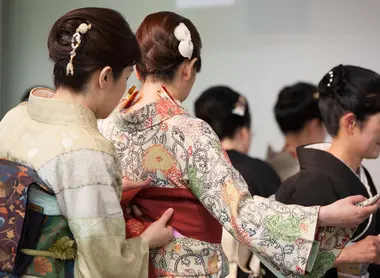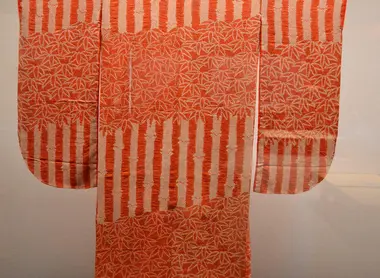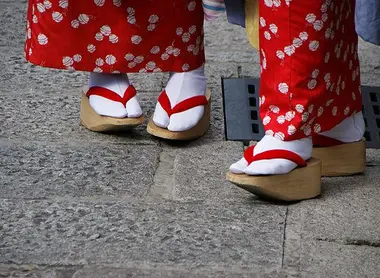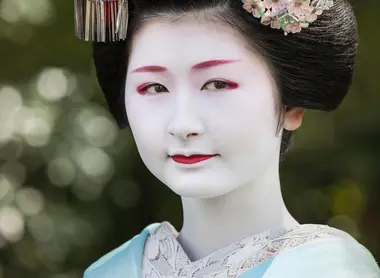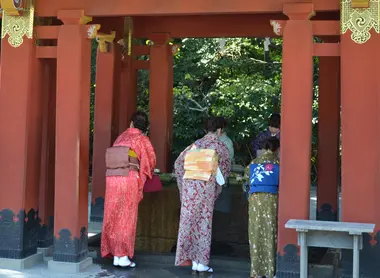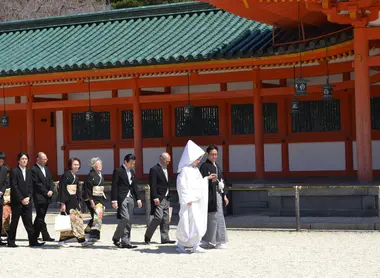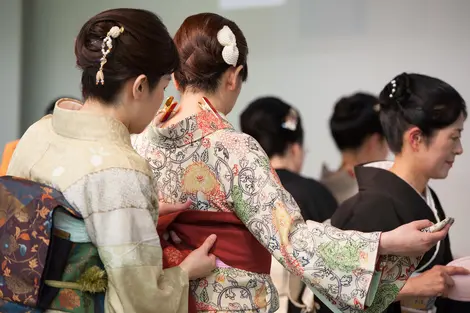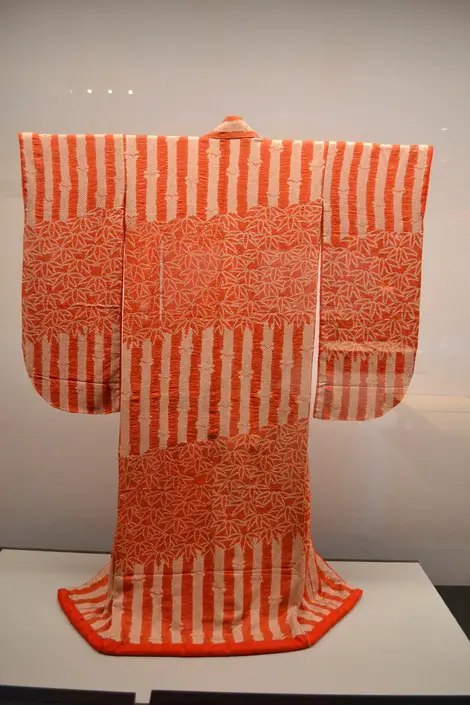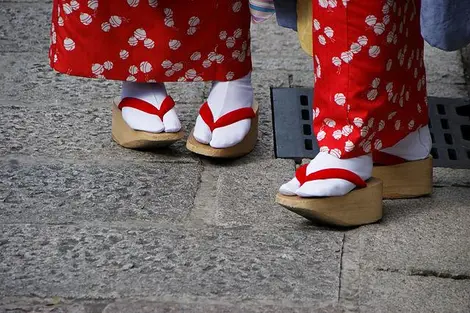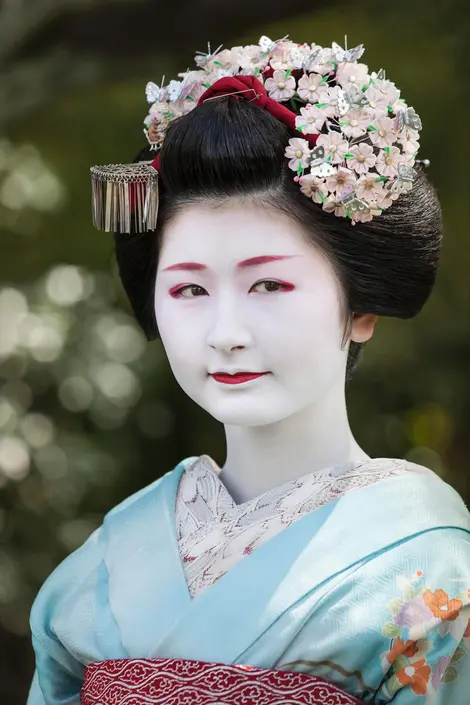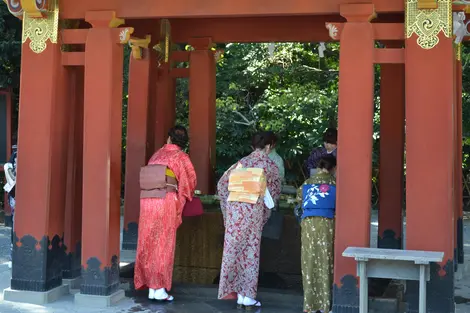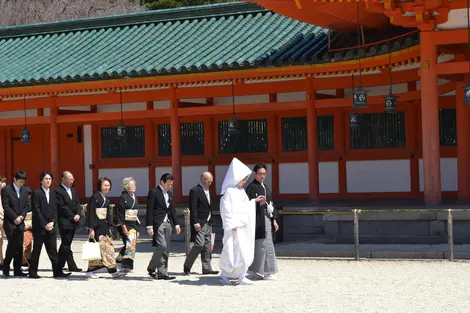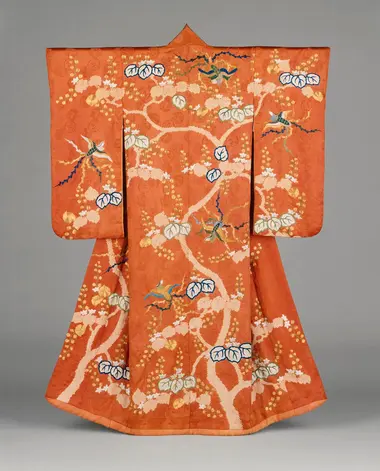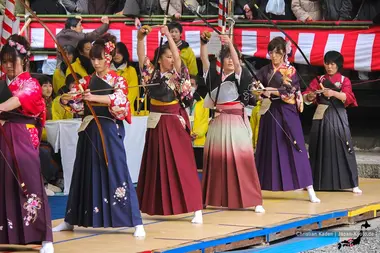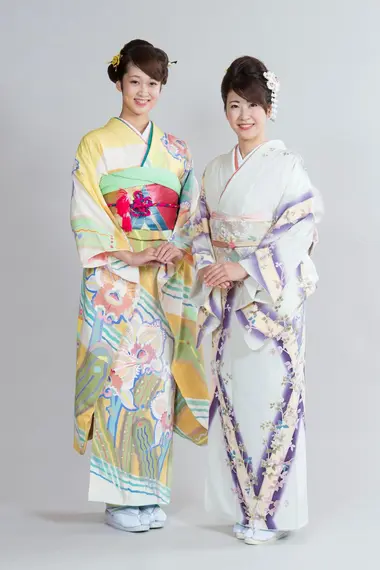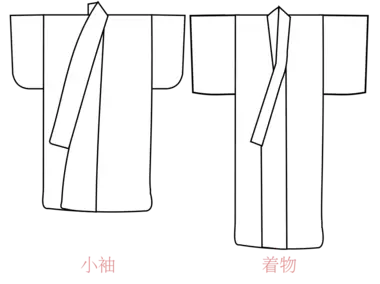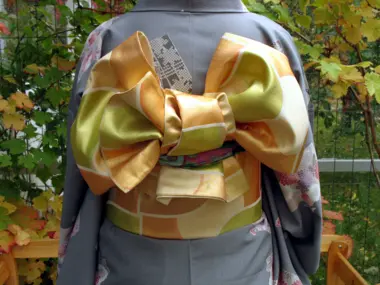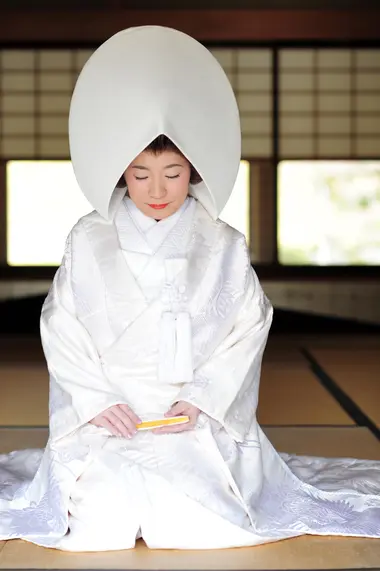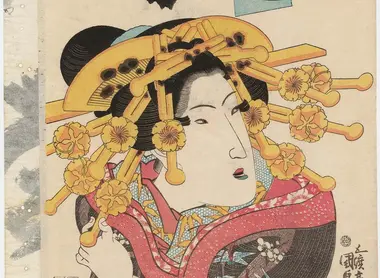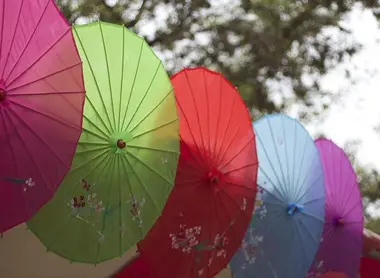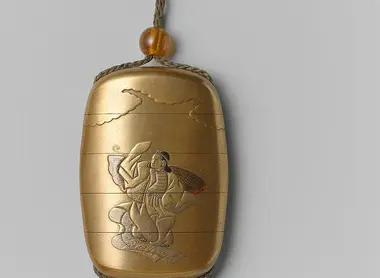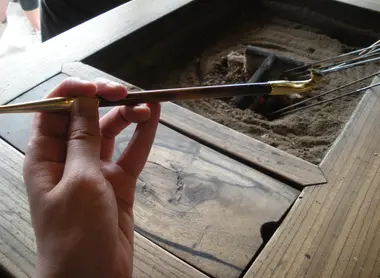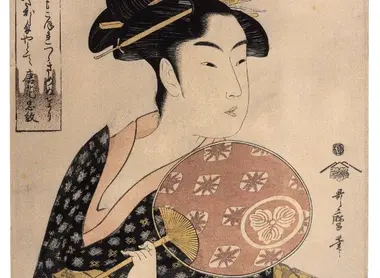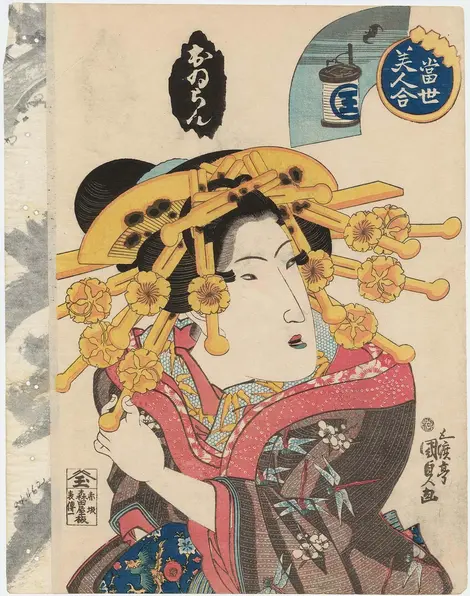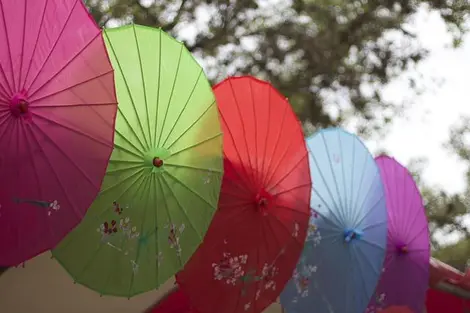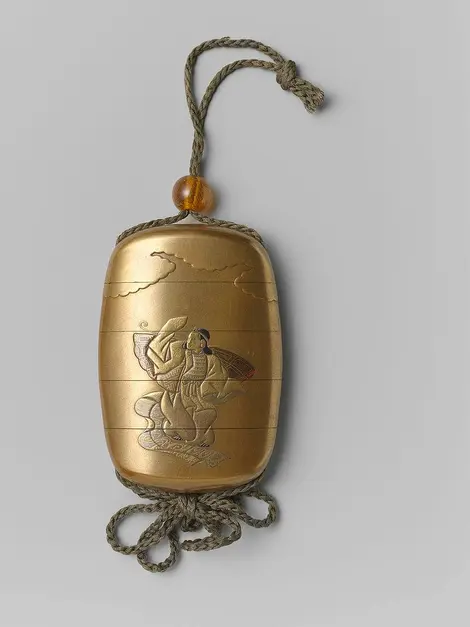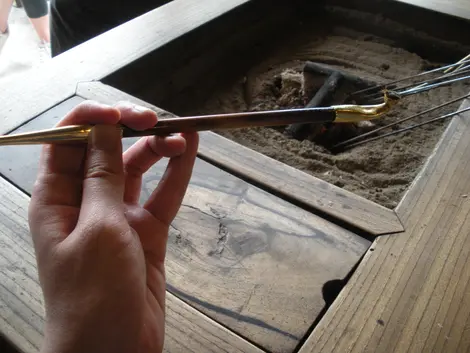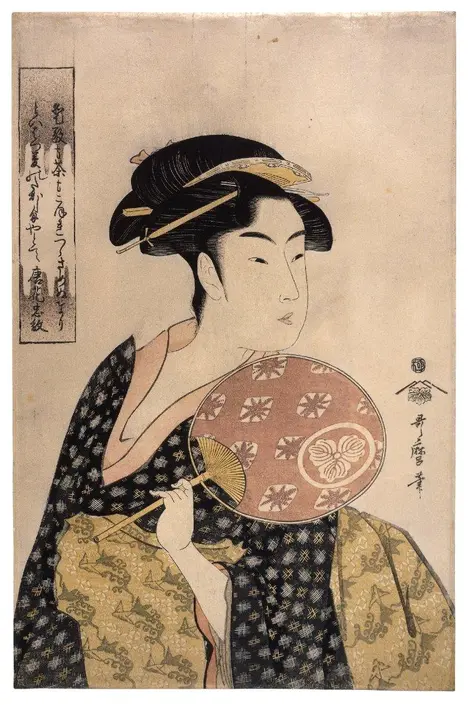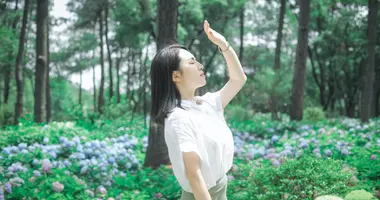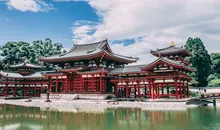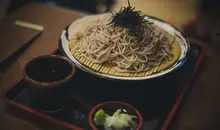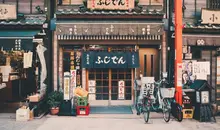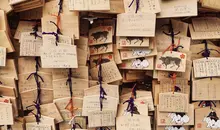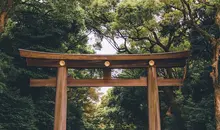Wafuku
- Published on : 16/01/2019
- by : S.V.
- Youtube
The Japanese dressing room
Wafuku is traditional Japanese clothing. Not only it is visually stunning but it has a fascinating history. Here's a quick rundown of the essentials of the traditional Japanese wardrobe!
During the Meiji era (1868-1912), wafuku, Japanese clothing, fell into disuse in favor of western outfits, yofuku. The Japanese gradually began abandoning kimono for shirts, pants and dresses, as well as succumbing to more western hairstyles. By seeing how it has evolved, through the kind of materials used and its particular codes, wafuku can be extremely instructive and used to show one's marital status and social class.
Clothes
- Fundoshi 褌
A fundoshi is a traditional male undergarment that only matsuri participants continue to wear today, during chariot and parade processions. In a similar vein the loincloth worn by sumo wrestlers, called a mawashi, is a type of rigid (and much stronger) fundoshi.
- Furisode 振袖
The furisode is a kimono-style gown with colorful patterns and very long sleeves that can reach more than a meter in length! It is unmarried girls who traditionally wear this silk kimono; especially at their seijin shiki, or coming of age ceremony.
- Haori 羽織
A haori is a loose jacket often without any external pattern, originally only worn by men. It is now also worn by women.
- Hakama 袴
Hakama are a type of long, pleated trouser, worn in feudal times by samurai and nobles. The seven folds of a hakama (five in front the and two at the back) represent the virtues of the samurai. It is worn today mainly during ceremonies and by martial arts practitioners, Shinto priests, and Buddhist monks.
- Homongi 訪問着
Th homongi replaces the furisode when a woman gets married. The designs are often more original and run the full length of the kimono.
- Kimono 着物
Kimono, which literally means "thing to wear", is a generic term for Japanese traditional costume. There are, however, many different styles of kimono that vary depending on the shape, colors and fabrics; each with its own specific name.
- Kosode 小袖
Made of silk, the kosode is a T-shaped garment, shorter than a kimono. Considered initially as an undergarment, it is from the Muromachi period (1392-1573) and held closed by an obi (belt) like a kimono. It is distinguished by its short, narrow sleeves.
- Obi 帯
The obi holds a kimono robe closed, crossed over the chest. Depending on the type of knot, in front or behind, this cloth belt indicates the social status of a person.
- Samue 作務衣
Usually made of blue cotton, the samue is a loose fitting outfit consisting of a pair of trousers and a jacket. It was originally the workwear of Zen buddhist monks, worn during their daily activities, but is today considered an indoor garment, worn by all.
- Tomesode 留袖
This formal kimono is divided into two types: the irotomesode 色留袖 and the kurotomesode 黒留袖. Always black in color, the kurotomesode is decorated with gold and silver wire motifs only in its lower part. It is a very formal garment worn by the mothers of the bride and groom at a wedding ceremony, or by geisha when entertaining. The irotomesode, like the kurotomesode, is a solid color with no pattern above the waist. It is an elegant and formal kimono, reserved for married women or older unmarried women. The tomesode often have the family crest printed on the sleeves, chest and back.
- Uchikake 打掛
The uchikake is a long wedding coat with a train. The bride wears it open over a kimono called a kakeshita. Particularly valuable, it can be entirely white or brocade and adorned with lucky charms (flowers, pines, cranes).
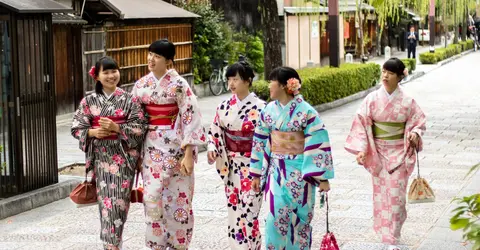
Young girls in yukata
Ant le Breton
Footwear
- Geta 下駄
Geta are wooden sandals. They can be flat or raised by ha (teeth) placed under the sole, which make it possible to keep the feet dry in the event of rain or snow.
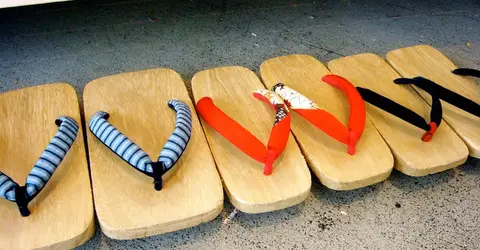
Geta
- Okobo おこぼ
Mostly worn by maiko, okobo are strappy platform sandals. The color of the strap represents the status of the maiko (beginner or experienced) in her okiya.
- Tabi 足袋
This sock with a toe-divider (with the big toe separated from the rest) is put on from the back and closes with metal fasteners. Today in many stores in Japan you can find modern tabi to wear just like regular socks.
- Jika-Tabi 地下足袋
Jika-tabi are toe-divided shoes with a rubber sole. They were created for workers in the early twentieth century and inspired by tabi.
- Waraji 草鞋
Made of rice straw, waraji are sandals laced at the ankle by a cord.
- Zori 草履
Zori are sandals with flat soles and straps. For the manufacture of modern zori, plastic and rubber have replaced the traditional rice straw.
Accessories
- Inro 印 籠
A box with several compartments made of precious materials such as lacquer, wood or ceramics, which hangs from the obi by a cord.
- Kanzashi 簪
Kanzashi are ornaments for the hair, ranging from the simplest to the most elaborate, and usually made of silk, metal, gold or tortoiseshell.
- Kinchaku 巾 着
The kinchaku is a cloth bag with drawstrings for carrying personal effects.
- Kiseru 煙 管
First appearing at the beginning of the Edo era, the kiseru is a long, thin pipe made of metal or bamboo for smoking tobacco.
- Sagemono 提げ物
Literally "things that hang", sagemono are accessories (wallet, writing implements, pipe case, tobacco pouch, inro, pill boxes etc.) that are often very refined, which are attached to ones obi when wearing traditional clothes like a kimono, as these clothes don't have pockets. The objects are suspended by a cord slipped between the obi and the kimono. The netsuke, a small wooden or ivory sculpture, pierced with one or two holes, is attached to the cord of a sagemono. It acts as a stopper by preventing the cord from sliding, keeping the accessories on the obi.
- Sensu 扇子, or Ogi 扇
A sensu is a folding fan, made of paper or silk, traditionally used by men and women of the imperial court at official ceremonies. It became a fashion object, and today is still an essential accessory for kabuki and noh actors.
- Uchiwa 団扇
An uchiwa is a rigid, non-folding paper or silk fan, round, square or oval in shape. At the time of Edo, young women carried uchiwa decorated with motifs related to current fashions or the seasons. This gave birth to a kind of ukiyo-e print, the uchiwa-e, in which a narrative scene or portrait is pictures on an uchiwa.
- Wagasa 和傘
The wagasa is a traditional umbrella, made by hand, using oiled washi paper and a bamboo frame. Its washi cloth, stretched and fixed on the frame with 30 to 70 bamboo ribs, give it an elegant and delicate appearance. Wagasa are extremely durable but still require special care to ensure longevity. It is always advised to let a wagasa dry while open in a dark and ventilated place. There are several types of wagasa: the bangasa, thicker and more robust; the janome-kasa, less ribbed and thinner and finally the higasa, a large umbrella to protect from the sun.
